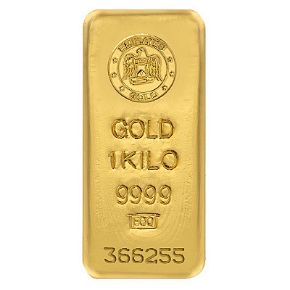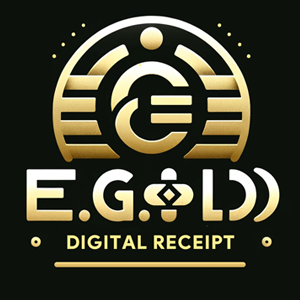
The cryptocurrency market is synonymous with potential, innovation, and, perhaps most notably, volatility. For investors drawn to the asymmetric upside of digital assets, managing the extreme swings in value is a constant challenge. This is where a strategic allocation to physical gold enters the picture, acting as a historical anchor that stabilizes and de-risks a modern, high-growth portfolio.
The mechanism by which physical gold achieves this portfolio stabilization is rooted in three key, time-tested principles: its inverse correlation, its role as a hedge against inflation and crisis, and its inherent, tangible nature.
1. The Power of Negative Correlation
The most critical factor in gold's stabilizing role is its historically low or inverse correlation with high-risk assets like cryptocurrencies and, often, the broader stock market.
Crypto's Behavior: Cryptocurrencies like Bitcoin frequently move in tandem with other risk-on assets, particularly during periods of market stress. When global financial markets panic, capital tends to flee all high-risk holdings, causing simultaneous, sharp drops in tech stocks, growth equities, and crypto.
Gold's Counter-Action: Physical gold, conversely, often acts as a safe-haven asset. When economic uncertainty, geopolitical turmoil, or inflation fears rise, investors traditionally shift capital into gold. This inverse movement means that when the crypto portion of a portfolio is experiencing a significant downturn, the gold portion is often holding steady or even appreciating, thereby dampening the overall portfolio's volatility and limiting maximum drawdowns.
By diversifying into an asset that behaves differently, an investor ensures their entire capital base is not subject to the same set of market risks.
2. A Proven Hedge Against Systemic Risk
Cryptocurrency's value is, to a large extent, tied to market sentiment and the future promise of decentralized technology. While powerful, this makes it vulnerable to macroeconomic shocks and inflationary pressures in a way that gold is not.
Inflation & Currency Devaluation: Gold has a centuries-long reputation as an inflation hedge. Because its supply is finite and its value is not tied to any single government or central bank (unlike fiat-backed currencies), it tends to retain its purchasing power when traditional currencies devalue. When investors worry about money printing or rapid inflation—concerns often amplified by crypto enthusiasts—gold becomes an essential store of value.
Tangible Value vs. Digital Reliance: Physical gold (bullion, coins, or bars) represents a tangible asset that exists outside of the digital and traditional financial systems. In a worst-case scenario—such as a catastrophic failure of digital infrastructure, extreme regulatory changes, or a major financial crisis—physical gold remains a globally recognized and highly liquid asset. This tangibility offers a layer of ultimate insurance and psychological comfort that a purely digital asset cannot match.
3. Mitigating Extreme Volatility and Emotional Decision-Making
The high volatility of crypto can lead to emotional and often counterproductive trading decisions. A portfolio solely focused on digital assets can experience price swings so dramatic that they trigger panic selling at the worst possible time.
Smoother Returns: The inclusion of a stable asset like physical gold helps create a smoother equity curve for the entire portfolio. By reducing the severity of peak-to-trough drops (drawdowns), gold makes it easier for the investor to maintain their long-term strategy and avoid selling out of fear.
Capital Preservation: Gold’s primary role is capital preservation. While it does not offer the exponential returns of a successful cryptocurrency, its stability ensures that a portion of the investor's wealth is protected. This preserved capital is then available to re-enter high-growth assets like crypto at opportune times—a key advantage for long-term wealth accumulation.
A Note on Digital Gold (Gold-Backed Stablecoins)
It is important to differentiate the investment. While gold-backed cryptocurrencies (like PAXG or XAUT) offer tokenized ownership of physical gold with the convenience of digital transfer, they still carry a degree of counterparty risk tied to the issuer and custodian. Investing in actual physical gold provides the purest form of the "if you don't hold it, you don't own it" insurance, offering the full, unadulterated benefits of tangibility and independence from any centralized digital platform.
For the forward-thinking investor, the question is not "Gold or Crypto?" but "Gold and Crypto." A strategic allocation of physical gold provides the financial and psychological ballast necessary to navigate the turbulent seas of the cryptocurrency market. By leveraging gold's inverse correlation, its hedging capabilities, and its tangible security, investors can create a more resilient, balanced, and sustainable capital structure capable of absorbing shocks while maintaining exposure to the cutting edge of digital finance.
NOTE
This Content is the copyrighted content of EE.GOLD. All rights are reserved. You are welcome to share or use our content only by including direct links to our website. Any other form of reproduction, distribution, or use without proper attribution is strictly prohibited.
This Content is intended solely for educational purposes. The information provided does not constitute financial or investment advice.
Please note that Digital Storage Receipt, Secure Storage Solutions, and Physical Gold Sales are the only services offered by EE.GOLD.
We strictly adhere to government regulations and are firmly against all illegal financial or investment activities globally.
For further inquiries, feel free to contact us through our official channels.










.png)

